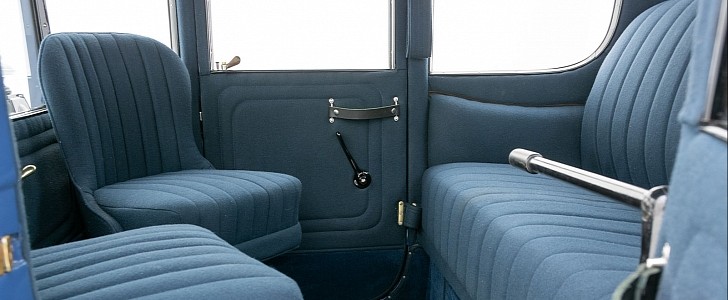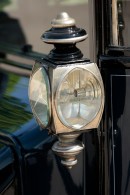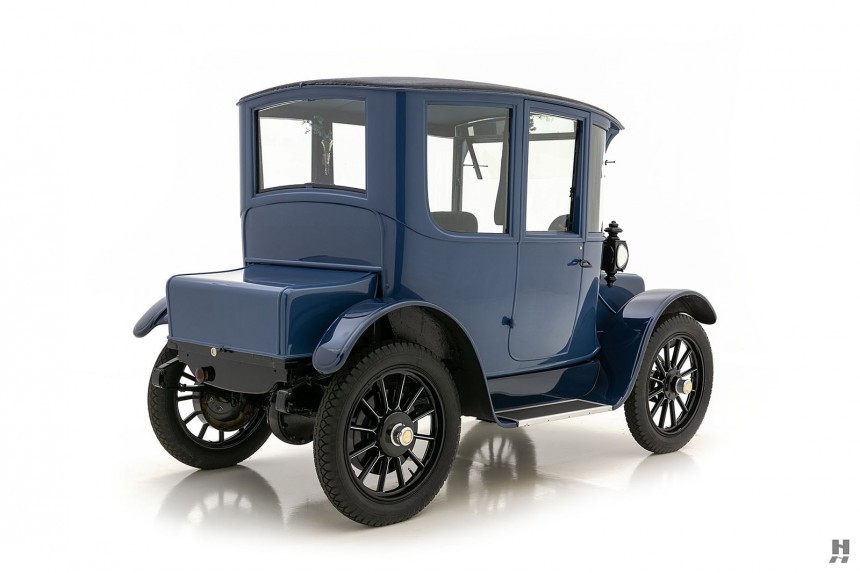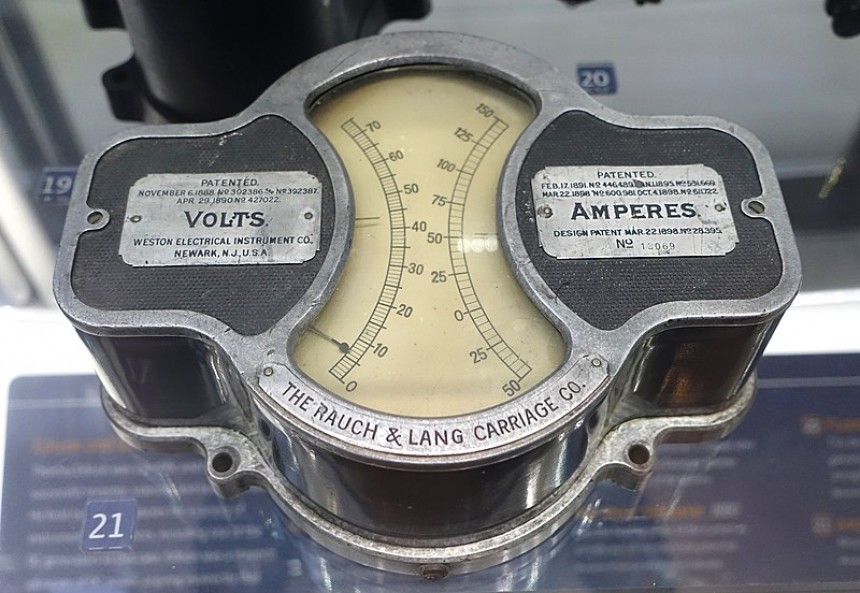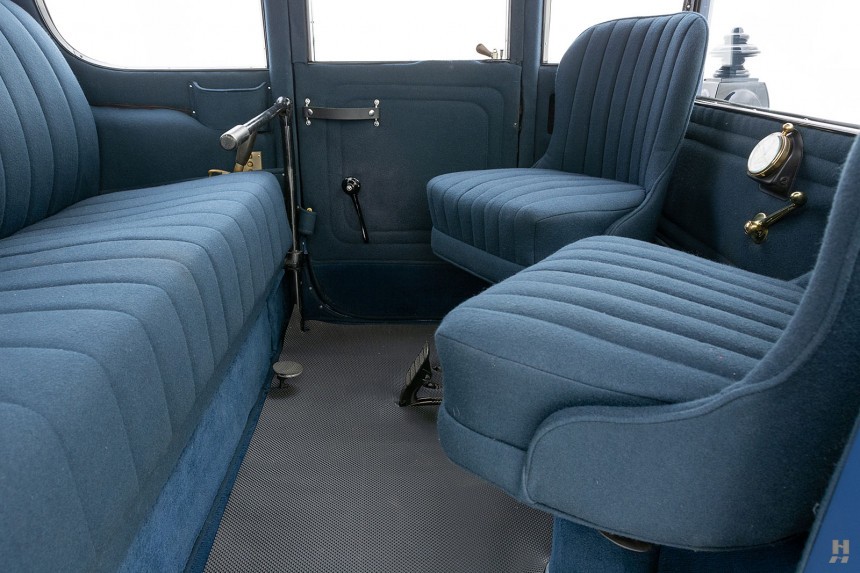As makers of electrically powered automobiles from way back in 1905, Rauch & Lang of Cleveland, Ohio, were originally known as premier carriage builders, and the company was founded in 1884.
When wagon builder Jacob Rauch formed a partnership with real estate scion Charles Lang to manufacture high-quality carriages, their horse-drawn carriages sat atop the mountain when it came to prestigious and costly transportation.
And when the pair ventured into 'horseless carriages' in 1903 with the purchase of a Buffalo Electric dealership, Rauch & Lang began to build and sell electric vehicles under their name.
As far back as the 1830s, Scotland's Robert Anderson had introduced electric motors and non-rechargeable 'galvanic cells' into a carriage. By 1859 chargeable batteries were introduced and made the electric car a viable idea. Around 1884 inventor Thomas Parker began building prototype electric cars in England, and by 1890 a Scottish-born chemist living in Des Moines, Iowa, one William Morrison, had applied for a patent on the electric carriage he’d built around 1887.
When 1916 rolled around Rauch & Lang was producing seven different body styles of fully electric cars, which ranged in price from $2,600 to $4,500. At the time, electric cars were prized by wealthy urbanite ladies as they were simple to drive and nearly silent while on the road. Their high-torque motors were faster off the line than any horse carriage and fully capable of hauling around finely appointed interiors and heavyweight coachwork capable of accommodating several passengers in livingroom-like style and comfort. They did not have an unpleasant smell or produce noxious fumes.
But some time around 1912 as the starter motor was adopted on petrol-fueled cars, the demand for electric alternatives began to decline.
By 1919, Rauch & Lang was beginning to see the writing on the wall. As of 1928, production had all but ceased, though, in 1929, the company built an experimental petrol-electric hybrid vehicle in conjunction with General Electric company. The Wall Street Crash of 1929 wiped out the company and signaled the end of Rauch & Lang.
Largely the work of Walter Baker and Justus Entz, the resulting electric cars were an answer to the difficulty of operating and maintaining the petrol cars of the day. Baker was essentially a pioneer of the electric vehicle, and Entz had developed a novel electromagnetic transmission that used a magnetic field to spin a driveshaft. By varying the electrical intensity of the field, a vehicle could go faster or slower without a clutch mechanism. Baker bought out the Entz patents in 1912 and licensed them to R.M. Owen & Company, producers of the Owen Magnetic, a gas-engined car that included the Entz transmission.
Then, Baker, Rauch & Lang began to produce the Owen Magnetic in Cleveland, so in December 1915, they absorbed R.M. Owen & Co. and immediately relocated to Cleveland.
Powered by a 90-volt electric motor, the cabins were trimmed in fine fabric and featured “parlor style” seating. The driver sat on a bench in the rear and steered via a folding tiller which was placed in opposition to two swiveling rear-facing captain chairs. The interior included controls for the throttle, brake, and a reverse selector. The instrumentation included a Waltham clock and Rauch & Lang-branded Warner gauges to monitor speed, mileage, DC volts, amps, and amp-hours.
At the time, their electric car was priced at $2,800 new, which was more than eight times the cost of a Ford Model T runabout. In comparison, the amount would represent somewhere around $75,000 in today’s dollars.
You can buy a Tesla Model 3 - the long-range racier Performance model - starting from $58,190.
By the time the production run had ended, fewer than 1,000 Model BX6 Electric Brougham’s had been built. So how much does it take to purchase an excellent example of the BX6 today? This one can be yours for $142,500 USD.
And when the pair ventured into 'horseless carriages' in 1903 with the purchase of a Buffalo Electric dealership, Rauch & Lang began to build and sell electric vehicles under their name.
As far back as the 1830s, Scotland's Robert Anderson had introduced electric motors and non-rechargeable 'galvanic cells' into a carriage. By 1859 chargeable batteries were introduced and made the electric car a viable idea. Around 1884 inventor Thomas Parker began building prototype electric cars in England, and by 1890 a Scottish-born chemist living in Des Moines, Iowa, one William Morrison, had applied for a patent on the electric carriage he’d built around 1887.
But some time around 1912 as the starter motor was adopted on petrol-fueled cars, the demand for electric alternatives began to decline.
By 1919, Rauch & Lang was beginning to see the writing on the wall. As of 1928, production had all but ceased, though, in 1929, the company built an experimental petrol-electric hybrid vehicle in conjunction with General Electric company. The Wall Street Crash of 1929 wiped out the company and signaled the end of Rauch & Lang.
Largely the work of Walter Baker and Justus Entz, the resulting electric cars were an answer to the difficulty of operating and maintaining the petrol cars of the day. Baker was essentially a pioneer of the electric vehicle, and Entz had developed a novel electromagnetic transmission that used a magnetic field to spin a driveshaft. By varying the electrical intensity of the field, a vehicle could go faster or slower without a clutch mechanism. Baker bought out the Entz patents in 1912 and licensed them to R.M. Owen & Company, producers of the Owen Magnetic, a gas-engined car that included the Entz transmission.
Powered by a 90-volt electric motor, the cabins were trimmed in fine fabric and featured “parlor style” seating. The driver sat on a bench in the rear and steered via a folding tiller which was placed in opposition to two swiveling rear-facing captain chairs. The interior included controls for the throttle, brake, and a reverse selector. The instrumentation included a Waltham clock and Rauch & Lang-branded Warner gauges to monitor speed, mileage, DC volts, amps, and amp-hours.
At the time, their electric car was priced at $2,800 new, which was more than eight times the cost of a Ford Model T runabout. In comparison, the amount would represent somewhere around $75,000 in today’s dollars.
You can buy a Tesla Model 3 - the long-range racier Performance model - starting from $58,190.
